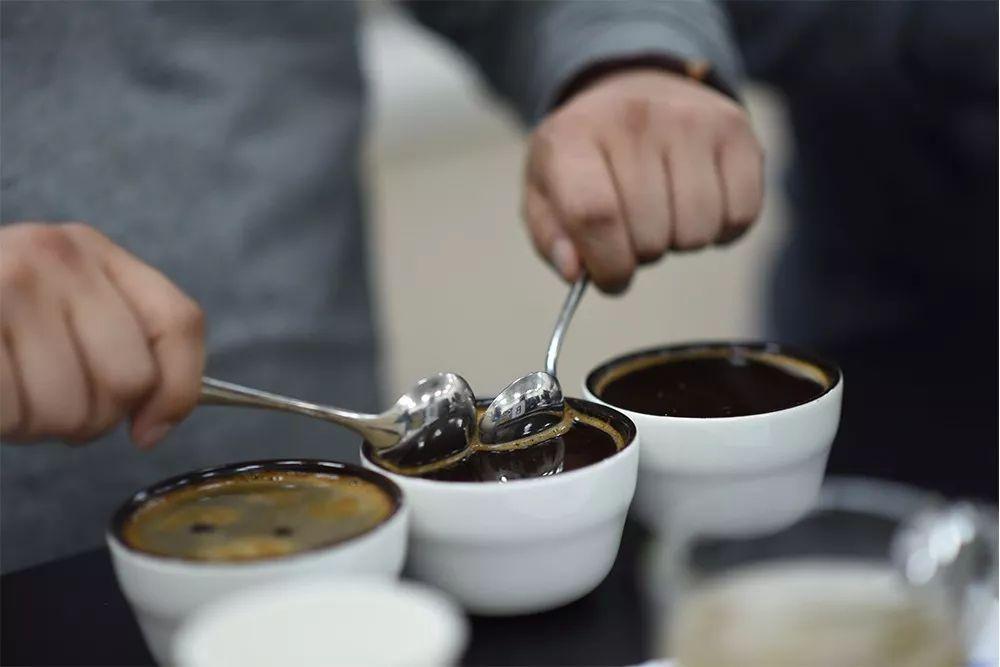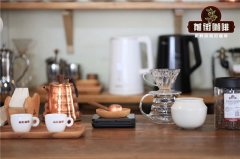What is the difference between the cup meter of COE and the coffee cup meter of SCAA?
At present, we commonly use SCAA cup meter and COE cup meter in coffee cup test. Qianjie today to share with you the difference between COE cup score table and SCAA cup score table.
The SCAA cup test is 5 cups per sample.
The scoring items are divided into 11 items: dry / wet aroma, flavor, aftertaste, acidity, alcohol thickness, consistency, balance, cleanliness, sweetness grade, comprehensive evaluation and defect deduction.
The COE cup test is 4 cups per sample.
The scoring items are divided into 9 items: dry / wet aroma, cleanliness, sweetness, acidity, taste, flavor, aftertaste, balance and comprehensive evaluation.
SCAA Cup score
The cup test of SCAA requires 5 cups for each sample to ensure consistency and objectivity. Because the coffee taking part in the cup test is above commercial grade, the scoring range of each item (except defect deduction) is 6-10 points, and the scoring unit range is 0.25 points, a total of 16 points.

Dry / wet aroma Fraggran/Aroma
Dry fragrance refers to the volatile aroma of coffee after grinding, while wet fragrance is the aroma of coffee powder after being soaked in hot water. The horizontal mark in the table is to assess the quality of the aroma, the vertical mark is the intensity of dry / wet aroma, and the quality describes the aroma smelled.
Flavor Flavor
Flavor refers to the obvious flavor or native flavor of a coffee bean, which can include good flavor and defective flavor in the description of flavor. If you have a prominent or good flavor, you can get a high score, while a defective flavor gets a low score.
Yu Yun Aftertaste
The aftertaste refers to the aftertaste of the throat when it returns to the nasal cavity after sucking and swallowing. As usual, after drinking coffee, the mouth can feel the good flavor of honey, flowers or chocolate, and sometimes feel the bad aftertaste like grass. If there is no rhyme or is too short, the score will be low.
Acid Acidity
Acidity is divided into high-quality acid and defective acid, the appropriate acidity can increase the vitality of a cup of coffee, such as bright fruit acid. On the contrary, the excessive strength of acid will cause discomfort, resulting in offensive acidity and dead acid. The scoring criteria of SCAA are divided into horizontal scale for score and vertical scale for strength.
Alcohol thickness Body
Alcohol thickness refers to the touch (taste) caused by the coffee liquid in the mouth. It shows a sense of stickiness, smoothness, thickness and weakness. SCAA is also divided into vertical thickness and horizontal scores on this item. The vertical scale is marked as the thickness of the caffeine, while the horizontal is the score for the coffee.
Consistent Uniformity
Consistency refers to the consistent and stable degree of 5 cups to measure the wet aroma, flavor and taste of the same sample. There are 5 spaces in the consistency column of the SCAA rating table, each grid represents the sample of each cup, each grid represents 2 points, a total of 10 points, if there is a difference in a cup sample, 2 points will be lost.
Balanced Balance
Balance refers to the balance between the flavor, aftertaste, acidity and taste of the same sample. If one of these items is too weak or too strong will affect the balance, points will be deducted.
Cleanliness Clean Cup
Cleanliness shows that there is no bad taste and taste from sucking to the aftertaste. In the SCAA table, 5 cups of samples are represented by 5 squares, and the samples that meet the requirements are 2 cents per cup, a total of 10 points.
Sweetness Sweetness
Sweetness refers to the sweetness of coffee after sucking, such as honey and caramel. The sweetness column on the SCAA cup score table is also divided into five squares representing five cups of samples. It is considered that each cup with excellent sweetness can get 2 points, a total of 10 points.

Comprehensive evaluation of Overall
A more subjective overall evaluation of the sample directly reflects personal preferences. For example, if there is a special flavor that is loved by cup testers, they will get a higher score.
Deduction of points for defects
During the cup test, it was found that there were major defects in the coffee, such as poor aroma, peculiar smell, or unpleasant flavor in the mouth, such as rubber, potion, and so on. Then judge whether it is a defect or a defect. if it is a defect, 2 points per cup will be deducted, and if it is a defect, 4 points will be deducted per cup. The formula is: deduction points = number of defect cups × defect strength.
Total score of SCAA
SCAA's cup test total score is calculated by adding together the scores of the first 10 items and subtracting the defect score.
A general score of 90-100 is called Outstanding.
The score of 85-89.99 is called Excellent
80-84.99 is called Very good.
If the score is less than 80, it does not reach the fine grade.
Coe Cup score
The COE cup test is 4 cups per sample. The items tested in COE cup include dry / wet aroma, cleanliness, sweetness, acidity, taste, flavor, aftertaste, balance and comprehensive evaluation.
According to COE's scoring criteria, the basic score is 36, with a total of 8 items (aroma is not included in the score), with a full score of 8 for each item and a minimum score of 0, so the highest score is 64, plus the basic score is 100.

The score items of COE and SCAA are roughly the same, except for the differences in individual details, in the COE score, dry / wet fragrance is no longer included in the total score, and the cleanliness is more strictly graded. The flavor of Chen Dou caused by storage will affect the cleanliness score; sweetness will also open the difference in scores.
The thickness of alcohol is changed to taste (Mouth Feel), which evaluates not only the thickness of alcohol but also whether it is smooth and astringent. Flavor evaluation will refer to the new version of the flavor wheel to make a more accurate evaluation, can write the specific flavor in the blank column. COE is not consistent with this project.

Total score of COE
Commercial beans with a total score of less than 70 in COE Cup are slightly worse.
The total score is between 70 and 74.99, which belongs to general commercial beans.
The total score is between 75 and 79.99, which belongs to high-grade commercial beans.
The total score is between 80 and 86.99, belonging to boutique coffee.
The total score is 87 or more, belonging to the COE competition level, and it is also the winning coffee of the outstanding cup, which is currently recognized as the highest level in the international coffee industry.
The above is some related information about Qianjie coffee arrangement.
I hope this article will help you to know more about coffee.
Important Notice :
前街咖啡 FrontStreet Coffee has moved to new addredd:
FrontStreet Coffee Address: 315,Donghua East Road,GuangZhou
Tel:020 38364473
- Prev

Paying attention to these details can make your hand coffee better. How can you make it better?
Qianjie wrote an article six months ago that paying attention to these details can make your hand-made coffee taste better, which describes some of the details that are inconspicuous in hand brewing but have an impact on a cup of coffee. This time, we will dig up some small details that are more neglected in the hand flushing. A brief review here let's briefly review the previous four details about hand-brewed coffee: 1. The last step of the preparation work.
- Next

Boutique Coffee details Africa -: Yemeni Coffee | the Yemeni mocha that once dominated the world
As early as the end of the 17th century to the early 18th century, the first coffee beans drunk by Europeans actually came from the Yemeni mocha, so mocha became synonymous with coffee. However, after three centuries, Yemeni coffee is no longer as rich as it used to be, with an annual output of only about 10,000 metric tons, compared with other countries.
Related
- Detailed explanation of Jadeite planting Land in Panamanian Jadeite Manor introduction to the grading system of Jadeite competitive bidding, Red bid, Green bid and Rose Summer
- Story of Coffee planting in Brenka region of Costa Rica Stonehenge Manor anaerobic heavy honey treatment of flavor mouth
- What's on the barrel of Blue Mountain Coffee beans?
- Can American coffee also pull flowers? How to use hot American style to pull out a good-looking pattern?
- Can you make a cold extract with coffee beans? What is the right proportion for cold-extracted coffee formula?
- Indonesian PWN Gold Mandrine Coffee Origin Features Flavor How to Chong? Mandolin coffee is American.
- A brief introduction to the flavor characteristics of Brazilian yellow bourbon coffee beans
- What is the effect of different water quality on the flavor of cold-extracted coffee? What kind of water is best for brewing coffee?
- Why do you think of Rose Summer whenever you mention Panamanian coffee?
- Introduction to the characteristics of authentic blue mountain coffee bean producing areas? What is the CIB Coffee Authority in Jamaica?

